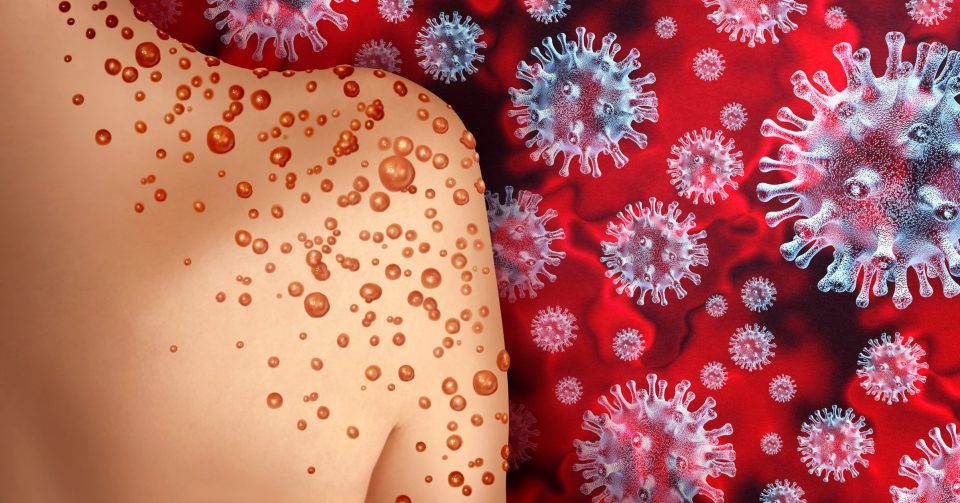
Monkeypox: 3 new 'severe' symptoms identified in largest study

New “severe” clinical symptoms have been identified in people infected with monkeypox, according to the largest study to date.
“An international collaboration of clinicians led by the Queen Mary University of London has identified new clinical symptoms in people infected with monkeypox in the largest case study series to date,” the Queen Mary University said.
The case series is the result of international collaboration across 16 countries, and it was published on July 21 in The New England Journal of Medicine (NEJM).
Also read: You can get COVID and monkeypox at the same time; what doctors say
The study was carried out on 528 confirmed infections at 43 sites between April 27 and June 24.
‘98% infections in gay or bisexual men’
“Overall, 98% of the persons with infection were gay or bisexual men, and 41% had human immunodeficiency virus (HIV) infection; the median age was 38 years. The transmission was suspected to have occurred through sexual activity in 95% of the persons with infection,” the study said.
The researchers said monkeypox can affect anyone and urged caution when examining unusual acute rashes in any person.
Also read: Telangana man who returned from Kuwait develops monkeypox symptoms
“Although the current outbreak is disproportionately affecting gay or bisexual men and other men who have sex with men, monkeypox is no more a ‘gay disease’ than it is an ‘African disease’. It can affect anyone. We identified nine heterosexual men with monkeypox. We urge vigilance when examining unusual acute rashes in any person, especially when rashes are combined with systemic symptoms, to avoid missing diagnoses in heterosexual persons,” they said.
Although sexual closeness is the most likely route of transmission in most of these cases, researchers stressed that the virus can be transmitted by any close physical contact through large respiratory droplets and potentially through clothing and other surfaces.
Many of the infected individuals reviewed in the study presented with symptoms not recognised in current medical definitions of monkeypox.
Also read: What is monkeypox? Know symptoms, causes, prevention
Know about 3 new symptoms
These symptoms include single genital lesions and sores on the mouth or anus. The clinical symptoms are similar to those of sexually transmitted infections (STIs) and can easily lead to misdiagnosis.
In some people, anal and oral symptoms have led to people being admitted to hospital for management of pain and difficulties swallowing.
“This is why it’s so important that these new clinical symptoms be recognised and healthcare professionals be educated on how to identify and manage the disease – misdiagnosis can slow detection and thus hinder efforts to control the spread of the virus. The study will therefore lead to increased rates of diagnosis when persons from at-risk groups present with traditional STI symptoms,” the university said.
Also read: Monkeypox: ‘Virus can get transmitted through linens’
Chloe Orkin, Professor of HIV Medicine at Queen Mary University and Director of the SHARE collaborative, who led the study said, “We have shown that the current international case definitions need to be expanded to add symptoms that are not currently included, such as sores in the mouth, on the anal mucosa and single ulcers. These particular symptoms can be severe and have led to hospital admissions so it is important to make a diagnosis.”
“Expanding the case definition will help doctors more easily recognise the infection and so prevent people from passing it on. Given the global constraints on vaccine and anti-viral supply for this chronically underfunded, neglected tropical infection, prevention remains a key tool in limiting the global spread of human monkeypox infection,” he explained.
‘Virus in semen samples’
Dr John Thornhill, Consultant Physician in Sexual Health and HIV and Clinical Senior Lecturer at Barts NHS Health Trust and Queen Mary University, and first author of the study said: “It is important to stress that monkeypox is not a sexually transmitted infection in the traditional sense; it can be acquired through any kind of close physical contact. However, our work suggests that most transmissions so far have been related to sexual activity – mainly, but not exclusively, amongst men who have sex with men. This research study increases our understanding of the ways it is spread and the groups in which it is spreading which will aid rapid identification of new cases and allow us to offer prevention strategies, such as vaccines, to those individuals at higher risk.”
On the new symptoms, he said, “We identified new clinical presentations in people with monkeypox. While we expected various skin problems and rashes, we also found that one in 10 people had only a single skin lesion in the genital area, and 15% had anal and/or rectal pain. These different presentations highlight that monkeypox infections could be missed or easily confused with common sexually transmitted infections such as syphilis or herpes. We, therefore, suggest broadening the current case definitions.”
Also read: India reports 4th monkeypox case
“We have also found monkeypox virus in a large proportion of the semen samples tested from people with monkeypox. However, this may be incidental as we do not know that it is present at a high enough levels to facilitate sexual transmission. More work is needed to understand this better,” he added.
According to the World Health Organization (WHO), “Monkeypox is a viral zoonosis (a virus transmitted to humans from animals) with symptoms similar to those seen in the past in smallpox patients, although it is clinically less severe. Monkeypox typically presents clinically with fever, rash, and swollen lymph nodes and may lead to a range of medical complications.”
Monkeypox is transmitted to humans through close contact with an infected person or animal, or with material contaminated with the virus. The virus is transmitted from one person to another by close contact with lesions, body fluids, respiratory droplets and contaminated materials such as bedding.

